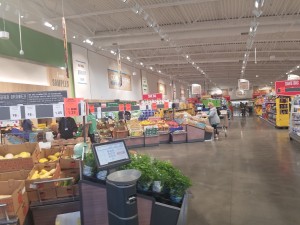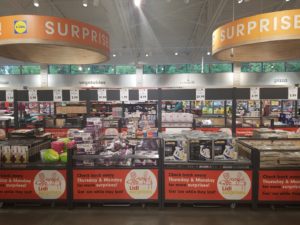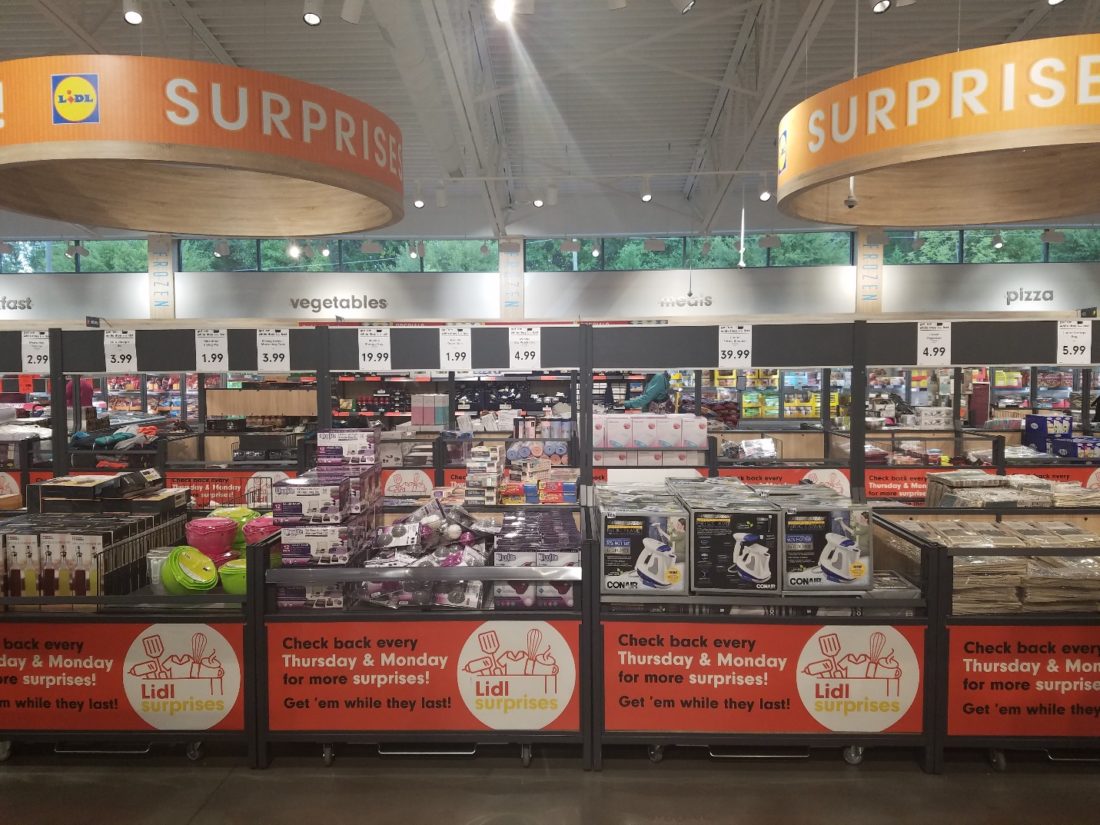Lidl Reshuffles U.S. Management Supervision: Move Suggesting Challenges Here In The U.S.

The spacious entry at Lidl. Photo by Neil Stern.
According to German trade press, Lidl announced a management change that will lead to new supervision in Germany of the U.S. market. Though local U.S. management disputes aspects of the store which pointed to “frighteningly weak” performance at some of the current 37 stores, it does seem to be a signal that conquering the U.S. may be a bit more difficult than first planned. From Tesco’s ill-fated Fresh & Easy effort to a long litany of other foreign chains that have failed to succeed, breaking into the U.S. market can be more difficult than it would appear.
I had a chance to visit one of the North Carolina units a few weeks back. After the much publicized initial burst of stores and very high consumer demand, I would characterize the store we visited as one of the under-performers. Traffic was light, in-store programs like sampling were being poorly executed and there was a general low energy level that signifies poor results.
More critically, there are some potential systemic problems that Lidl must address if they are to succeed in the U.S. market:
- The stores, in my opinion, are way overbuilt. They are too large, too overly-engineered and too costly to operate. 11 full sized checkout lanes, as one example, adds costs to the box and seems overkill for demand.
- The stores are too big. At 25,000 square feet, they are overly spacious and feel sterile, particularly with the dearth of customers during the visit. While Aldi and Trader Joe boxes feel tight (and perhaps a bit cramped at times), it lends to efficiency and a feeling of excitement.
- There is too much reliance on non-foods. While this is a critical part of the European experience, U.S. consumers have far more choice in these categories, which were also merchandised with little flair. Perhaps when the Heidi Klum line launches, this will add some momentum, but the U.S. consumer may not appreciate this mix in the stores.

Lidl’s large non-foods area. Photo by Neil Stern.
There are some excellent moments as well. Leading with an in-store bakery adds a greater element on fresh, as does the expanded produce area. The wine section is well done, and prices on private label are very sharp.
However, when competing head to head against Aldi, I would give their more established German competitor the edge. The Aldi stores, particularly the newer and remodeled units, are better merchandised and better designed to sustain lower costs and prices.
Lidl is an enormously tough competitor. Well capitalized and easily capable of making course corrections, they are not to be taken lightly, despite some early miscues. The road to 500 or 1,000 or 1,500 stores, however, must begin with a store model that works. I don’t see that yet. It will be interesting to see if new corporate management makes any significant course corrections.
Neil Stern for Forbes

No Comments